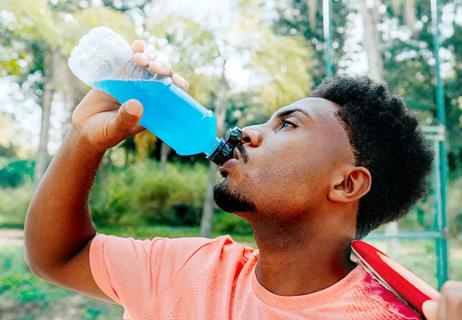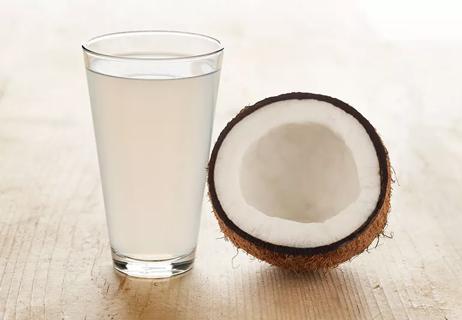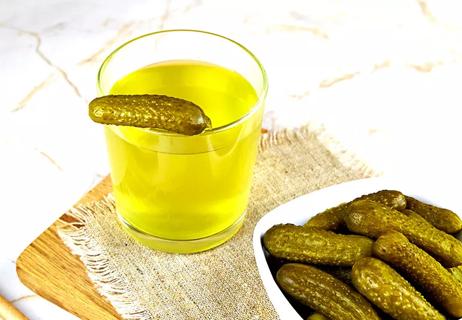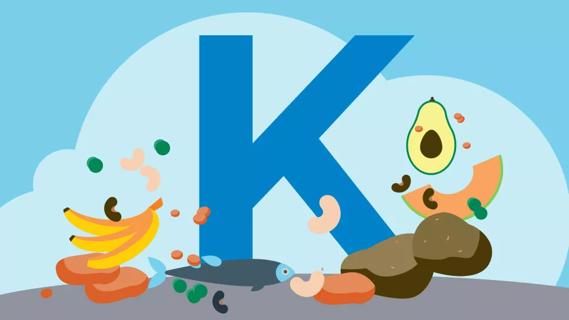Two key electrolytes — sodium and chloride — are the building blocks of salt

There are times when you might need to consume a little extra salt. Surprised? That’s understandable, given the amount of time and energy spent vilifying salt when it comes to personal health.
Advertisement
Cleveland Clinic is a non-profit academic medical center. Advertising on our site helps support our mission. We do not endorse non-Cleveland Clinic products or services. Policy
There’s a reason for caution, of course. For some people, too much salt can contribute to high blood pressure, heart disease and stroke. Those are conditions you want to avoid.
But salt also can deliver essential electrolytes your body needs to function. If you’ve been working out or dripping buckets of sweat on a hot day … well, some salt may help you replenish lost resources.
So, where’s the line between good and bad when it comes to salt intake for electrolytes? Let’s get some guidance from registered dietitian Julia Zumpano, RD, LD.
Salt is actually a combination of two key electrolytes — sodium and chloride.
Those elements are among the list of substances classified as electrolytes. Others include magnesium, potassium and calcium. Your cells use electrolytes to conduct electrical charges to keep your body running.
Positive and negative electrolyte ions running through your system do some heavy lifting. They help maintain your fluid levels; turn nutrients into energy; and support heart rhythm, brain function and muscle control.
“Each electrolyte provides different properties to meet different needs for you,” says Zumpano.
Sodium and chloride, the components of salt, are the two most abundant electrolytes in your body. Both play a critical role in helping your body’s cells maintain a proper balance of fluid.
Advertisement
Each has other duties, too. Sodium plays a role in how cells absorb nutrients and aids nerve and muscle function. Chloride works to regulate blood pressure and keep your body’s natural pH level in line.
When you exercise or spend time in the heat, your body sweats as a natural cooling response. But the perspiration pouring out of your pores isn’t just water. Sweat also contains a good amount of sodium.
So, as you sweat and soak a shirt during a tough workout or while toiling under the blistering sun, your body is leaking key electrolytes drop by drop. Plus, there are “super sweaters” who lose even more.
Boosting your sodium or salt intake can quickly replenish lost electrolytes. That’s why most sports drinks contain sodium and other electrolytes. “If you’re low in electrolytes, you’ll often feel better almost immediately after replenishing them,” notes Zumpano.
That’s important because the loss of electrolytes can create an imbalance that brings on symptoms such as:
An extreme loss of sodium may lead to hyponatremia, which can cause swelling in your brain, seizures and coma. (Marathon runners and other endurance athletes are often vulnerable to this condition.)
If you need them, yes — but it’s important not to overdo it, either.
“It’s key to take an individualized approach as to how much sodium you might need,” says Zumpano. “You should consider your cardiac health, your blood pressure and how much you sweat.”
It’s worth noting here that the average American diet includes far more sodium than recommended. Given that, intentionally adding more sodium to your diet to offset electrolyte losses should only be done when there is a need.
Many sports drinks contain 250 milligrams or more of sodium — which is more than 10% of what’s recommended for the day. That’s what makes the electrolyte-enhanced drink an effective way to rebalance your system.
Other options for a quick dose of sodium include:
Try to avoid adding sodium through fast food and other highly processed items, advises Zumpano.
If you’re concerned about taking in too much sodium while trying to balance your electrolytes, there’s a natural dietary workaround: Eat foods high in potassium.
The reason? Potassium can help lower your blood pressure. Basically, it counteracts one of the big negative effects of excess sodium. “If you increase your potassium, you’ll be better able to handle a bit more sodium,” says Zumpano.
Advertisement
On a side note, adding potassium to your diet is probably a good idea even if you’re not boosting sodium or salt intake. Research shows that people generally fall short of eating enough potassium.
Also, potassium mainly comes from plant-based foods such as fruits, vegetables, nuts and beans, which offer many other benefits, too.
Salt contains two key electrolytes — sodium and chloride — that your body needs. Given how quickly these electrolytes can be depleted through sweat, salt represents an effective way to replenish low reserves.
That doesn’t mean it’s time to start freely shaking salt onto everything you eat. Too much salt can still be a problem, after all.
“Some people need food or drinks with more sodium at certain times, like after exercising or when it’s really hot outside,” says Zumpano. “Listen to your body and replenish those lost electrolytes as needed.”
Advertisement
Learn more about our editorial process.
Advertisement

Sports drinks and electrolyte-infused waters aren’t the only game in town

Sports drinks are best when needed — and that’s not all the time

What you do in the hours and days after exercise can determine how your body bounces back

This treat from the trees can help replace lost electrolytes

Here’s why this drink is a nutritious option

From probiotic powerhouse to hangover cure

Potassium is an electrolyte that helps your muscles contract and acts as a counterbalance to sodium

Excess salt and sodium consumption is a worldwide health concern

Type 2 diabetes isn’t inevitable with these dietary changes

Applying a hot or cold compress can help with pain